
Aelbert Jacobsz. Cuyp was one of the leading Dutch Golden Age painters, producing mainly landscapes. The most famous of a family of painters, the pupil of his father Jacob Gerritsz. Cuyp (1594–1651/52), he is especially known for his large views of Dutch riverside scenes in a golden early morning or late afternoon light.
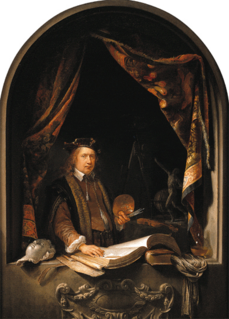
Gerrit Dou, also known as GerardDouw or Dow, was a Dutch Golden Age painter, whose small, highly polished paintings are typical of the Leiden fijnschilders. He specialised in genre scenes and is noted for his trompe-l'œil "niche" paintings and candlelit night-scenes with strong chiaroscuro. He was a student of Rembrandt.
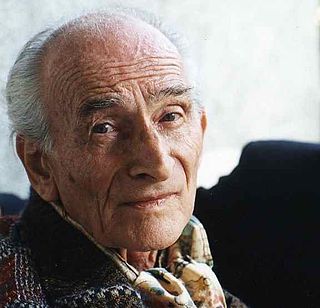
Balthasar Klossowskide Rola, known as Balthus, was a Polish-French modern artist. He is known for his erotically charged images of pubescent girls, but also for the refined, dreamlike quality of his imagery.

Luc-Olivier Merson was a French academic painter and illustrator also known for his postage stamp and currency designs.

Johan Barthold Jongkind was a Dutch painter and printmaker. He painted marine landscapes in a free manner and is regarded as a forerunner of Impressionism.

Jozef Israëls was a Dutch painter. He was a leading member of the group of landscape painters referred to as the Hague School and, during his lifetime, "the most respected Dutch artist of the second half of the nineteenth century".
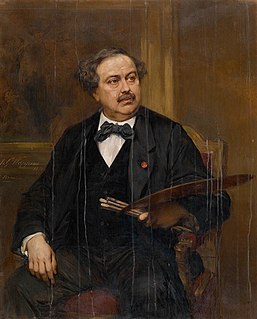
Egide Charles Gustave, Baron Wappers was a Belgian painter. His work is generally considered to be Flemish and he signed his work with the Dutch form of his name, Gustaaf Wappers.

The Hague School is a group of artists who lived and worked in The Hague between 1860 and 1890. Their work was heavily influenced by the realist painters of the French Barbizon school. The painters of the Hague school generally made use of relatively somber colors, which is why the Hague School is sometimes called the Gray School.

J(oh)an and Jacob van Huchtenburg were two Dutch Golden Age painters in the second half of the seventeenth century. Both brothers were natives of Haarlem, moved to Paris, but died in Amsterdam. The main source about their lives is from Arnold Houbraken. Some of the information from the 19th century is contradictive.
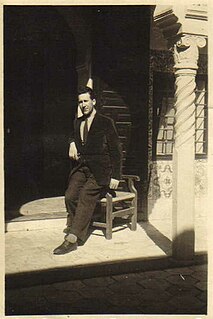
Maurice Boitel was a French painter.

Meijer Isaac de Haan was a Dutch painter. In French the name was written Meyer de Haan.

Abraham de Vries was a Dutch painter who was one of the leading portraitists of his age. As he led a peripatetic lifestyle and worked in France, Antwerp and the Dutch Republic his stylistic qualities are difficult to pin down.

The Stoning of Saint Stephen is the first signed painting by Dutch artist Rembrandt, painted in 1625 at the age of 19. It is currently kept in the Musée des Beaux-Arts de Lyon.
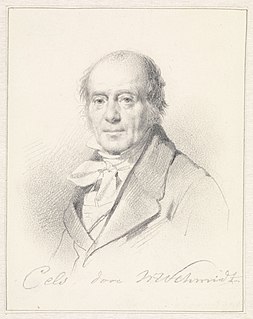
Cornelis Cels was a Flemish painter of portraits and religious subjects. He was a professor and director of the Académie des Beaux-Arts de Tournai. He was patronized as a portrait painter by the court of The Hague.

Jacob Vrel was a Dutch, Flemish, or Westphalian painter of interiors and urban street scenes during the Dutch Golden Age.

Hieronymus Janssens or Jeroom Janssens was a Flemish genre painter known for his compositions depicting elegant companies engaging in dance, music or play, which were of influence on the development of the genre of the conversation piece. He also painted architectural scenes of real or imaginary palaces, churches, temples and art galleries.

Willink van Collenprijs is a former Dutch art award, which was awarded for the first time in 1880 by the Sociëteit Arti et Amicitiae. It was intended as an encouragement award for young artists, and was considered as a national counterpart to the Paris Salon. Its existence of more than 71 years proves the success of Amsterdam's art policy. For many of its winners, it was a valuable boost to their careers in the Dutch art world. Some of the prize winners were also recognized abroad and remain well known today.
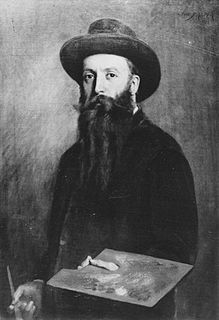
Alphonse Stengelin (1852-1938) was a French painter, engraver, and lithographer who spent much of his life working outside France. He is remembered mostly for his landscapes.

Jean-Baptiste Olive was a French painter.

André Eugène Dauchez, born in Paris, was a French painter, watercolourist, pastellist, engraver, draughtsman and illustrator known for landscapes, waterscapes and seascapes.






















